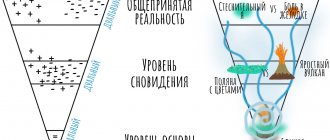AUTHOR'S FOREWORD TO THE RUSSIAN EDITION
You can stand on your point of view, but you cannot sit on it.
folk wisdom
In ancient times, people lived in social communities: family, clan, extended family, and later in a tribe. In some cultures, such a community was the city-state. In the process of development, social associations became larger and larger: the state, the nation, the world community.
Technical and cultural progress, the reduction of distances have led to the fact that all people today are to a certain extent interconnected. What is happening today in the most remote corner of the world affects the well-being of all humanity.
Confirmation of the unity of humanity is the fact that, for example, military conflicts are no longer only the business of the parties involved in them, but also become the joys and sorrows of all humanity.
Using a variety of techniques, case reports, and examples, this book presents positive psychotherapy and positive family therapy as a new form of psychotherapy. First of all, it reveals the relationship between the disease-culture-family-upbringing system and psychotherapy.
Since the publication of this book in German and English, my therapeutic concept has undergone further development, my approach has been accepted as a psychotherapeutic method and has been repeatedly presented at national and international congresses and in scientific journals. Psychological research in the vein of positive psychotherapy (questionnaires, semantic differential, etc.), to the extent that any conclusions can be drawn from their results, confirm my theoretical and practice-tested assumptions. The reaction of specialists, specialized magazines and readers to my books was a great support for me.
The concept of positive in positive psychotherapy means, first of all, that the therapist is not focused on eliminating the violations and disorders that have arisen, but tries first of all to mobilize the patient’s abilities and potential for self-help; positive, in accordance with the original “positum”, means “real”, “ previously given." The valid and previously given data are not conflicts and disorders, but the abilities that each person possesses,
This approach is feasible if we are willing to accept other types of thinking that give different meanings to illness and propose alternative treatment strategies.
This book presents mainly mental and psychosomatic disorders and provides the main models of psychotherapeutic care for these conditions. In line with positive psychotherapy, treatment is not limited only to the direct therapist-patient relationship, but also includes self-help strategies and preventive educational measures. The purpose of this book is to introduce psychotherapists and doctors of other specialties to the proposed treatment strategy. In each chapter, for greater clarity, an Eastern parable with a critical interpretation is given.
Positive psychotherapy is not only a specific form of therapy, but is closely related to significant other-centered parenting, patient-centered self-help, and therapist-centered psychotherapy. New possibilities for psychotherapy are being revealed that are not only economically feasible, but also extremely effective, directly combining various psychotherapeutic methods. The book discusses and compares with positive psychotherapy such well-known therapeutic approaches as psychoanalysis, individual psychology, behavioral therapy, logotherapy, transactional analysis, analytical psychology and group psychotherapy,
Based on the model of the etiology of mental and psychosomatic diseases, a practical model of the psychotherapeutic process is substantiated: a five-step treatment strategy in positive psychotherapy. At the same time, modifications of this strategy are shown in relation to helping oneself.
We are talking about a multilateral therapeutic relationship in which the therapist, the patient and the world around him are involved as equal partners in psychotherapy - in essence it is psycho-socio-therapy;
- The actual psychotherapeutic situation is based on the direct relationship between therapist and patient.
- The patient begins to engage in guided self-help, acting as a psychotherapist for his environment, in particular, the conflict partner.
- Conflict partners may in turn also be involved in therapy, such as family or social skills therapy.
Five-step psychotherapy can be applied in these three therapeutic areas (psychotherapeutic situation, patient as therapist, and social environment therapy).
This process opens up new possibilities in releasing people's self-help potential and allows the therapist to approach the patient and family more humanely in many ways. Perhaps, I hope so, this can open up new perspectives on a person’s relationship with his neighbors.
I am grateful to many of my colleagues for the knowledge that they shared with me and my sons during our meetings and seminars in 17 cities of the CIS. To date, 12 centers have been established in the CIS, which work in line with the model of positive psychotherapy, psychosomatics and transcultural psychiatry.
I express my gratitude to Mr. D. Leontiev (Department of Psychology, Moscow University) for his efforts in publishing this book.
This book was translated into Russian by Mrs. L. Trubitsyna and Mrs. T. Kulichenko. I express my deepest gratitude to them.
For readers who are interested in systematic information about positive psychotherapy within the framework of family therapy and psychosomatics, I can recommend getting acquainted with my books “Positive Psychotherapy”, “Psychotherapy of Everyday Life”, “The Merchant and the Parrot”, “In Search of Meaning; psychotherapy in small steps” and “Psychosomatics and positive psychotherapy”.
Wiesbaden, August 1992. Nossrat Pezeshkian
Content
From the editor
Author's preface to the Russian edition
Positive Process History: Dream
Preface to the English edition
Six messages of positive family therapy
From the publisher
Although this book is not one of the so-called “popular science” books, it will be of interest not only to medical specialists and psychologists.
The essence of N. Pezeshkian’s approach can be expressed by the formula: KNOW YOURSELF AND HELP YOURSELF. Therefore, anyone who is not burdened by thinking about human nature and the vicissitudes of human relationships will derive considerable practical benefit from it. This primarily applies to teachers, parents, educators, health and social service workers. In recent years, Nossrat Pezeshkian has been a frequent visitor to Russia and the Commonwealth countries. His approach is becoming more and more popular in our country, and new centers of positive psychotherapy are springing up in different cities. The reasons for the success of positive psychotherapy are the fairly obvious advantages of the approach itself. Firstly, it is universal, applicable to a wide range of problems - from mental and psychosomatic illnesses to family conflicts, parenting difficulties and conflicts at work. Secondly, it does not oppose itself to other psychotherapeutic approaches, but, on the contrary, seeks to unite them. Thirdly, it is focused on making people themselves psychotherapists for themselves and their loved ones. And, fourthly, in it, like in no other approach, a large place is occupied by the comparison of different cultures and styles of education and the analysis of conflicts arising from mutual misunderstanding of bearers of different traditions, attitudes and norms of behavior. In our super-multinational country this is more than relevant. Although, as far as we know, N. Pezeshkian has not yet tried to apply his approach directly to the resolution of interethnic conflicts and tensions, it contains rich possibilities for this.
This book was made in close collaboration with Dr. Pezeshkian himself, which made it possible to prepare the text at the highest possible level. Both the original German and the later English edition of the book were used for translation. It also included, at the author's request, one chapter from the book Positive Psychotherapy, which examines the relationship between positive psychotherapy and other psychotherapeutic approaches. It remains to name a number of people who, in addition to those listed on the back of the title page, contributed to the work on this book. These are S.V. Goshko, D.E. Karasev, V.I. Trubitsyn, A.V. Turbaevsky.
Moscow, August 6, 1992,
D.A.Leontyev, Candidate of Psychological Sciences, Director of the Smysl Publishing House
ISBN 5-85494-001-9









